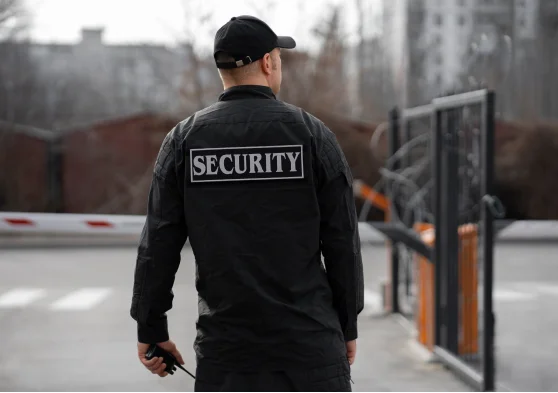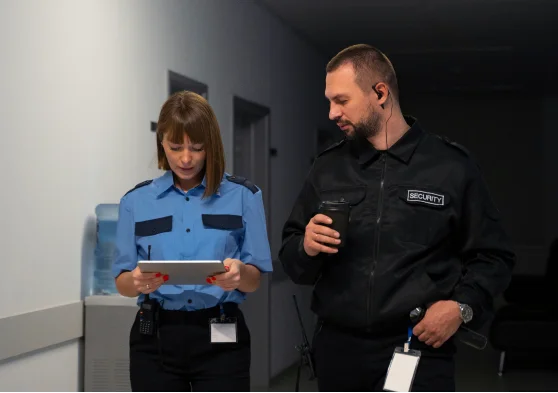Parking lot security in New York is a crucial aspect of ensuring safety for both vehicle owners and pedestrians. Given the high population density, busy streets, and high value of vehicles in New York City, maintaining robust security systems in parking lots is essential to reduce theft, vandalism, and accidents. Whether it’s a public parking lot, a residential garage, or a commercial parking structure, security measures are essential for protecting vehicles, property, and people.
Here’s a detailed overview of parking lot security in New York:
- Access Control
- Gated Entrances & Exit Barriers: Many parking lots and garages have gated or restricted access points to control entry and exit. This can include automated gates that open for vehicles with valid access cards, key fobs, or license plate recognition systems.
- Key Cards or Mobile Apps: Some private parking facilities, particularly in commercial and residential buildings, use key cards, fobs, or mobile apps that grant access to authorized vehicles. This helps ensure that only registered users are allowed entry, enhancing security and preventing unauthorized access.
- Staffed Entry Points: In high-traffic or high-value parking lots, security personnel may be stationed at entrances and exits to verify the identity of individuals entering the parking area, ensuring that only customers or approved individuals gain access.
- Surveillance and Monitoring
- CCTV Cameras: Surveillance cameras are a fundamental component of parking lot security. Cameras are typically installed throughout the parking lot, covering entry and exit points, walkways, and the general parking area. They help deter criminal behavior such as theft or vandalism and provide evidence in case of incidents.
- Real-Time Monitoring: Some parking lots are monitored 24/7 by security personnel or a remote monitoring station, allowing for immediate response to suspicious activity or emergencies. This includes monitoring surveillance feeds in real-time to detect any criminal activity.
- License Plate Recognition (LPR): Some parking lots employ license plate recognition technology to track vehicles entering and exiting. This helps with security and ensures that only registered vehicles can access certain areas of the parking lot. LPR can also be used to identify vehicles involved in incidents or criminal activity.
- Lighting and Visibility
- Adequate Lighting: Proper lighting in parking lots is essential for both safety and security. Well-lit areas deter criminal behavior and improve visibility, reducing the risk of accidents. Lighting should be installed in key areas like entrances, exits, walkways, and between parking spaces.
- Motion-Sensor Lights: Many parking lots use motion-sensor lights that turn on only when movement is detected, saving energy while also making it known when activity is occurring in certain areas of the lot.
- Floodlights for Large Areas: For larger parking lots or multi-story garages, floodlights or high-powered spotlights can illuminate the entire area, reducing shadows and blind spots that could be exploited for criminal activity.
- On-Site Security Personnel
- Security Guards: Parking lots in high-traffic or high-risk areas often employ security guards to patrol the property, monitor access points, and ensure the safety of vehicles and pedestrians. Security guards can respond to incidents, assist customers, and deter potential criminals with their visible presence.
- Patrols and Surveillance: Regular patrols by security personnel ensure that the entire parking lot is monitored for suspicious activity. This can include foot patrols, vehicle patrols, or even the use of security robots in certain advanced parking facilities.
- Emergency Response: Security guards are typically trained to respond to emergencies, such as accidents, medical incidents, or criminal activity. Their presence provides reassurance to vehicle owners and pedestrians, knowing that help is nearby in case of an emergency.
- Emergency Systems
- Panic Buttons and Call Boxes: Many parking lots, especially those that are open 24/7 or in isolated areas, have emergency call boxes or panic buttons installed in key locations. These systems allow customers or staff to quickly contact security or law enforcement in case of an emergency, such as a theft or assault.
- Public Address Systems: Some parking lots and garages use PA systems to make public announcements, provide instructions during emergencies, or deter criminal activity by making a loud, visible presence of security or law enforcement.
- Alarms and Sensors: Alarms that detect motion, forced entry, or unauthorized access are installed in some parking facilities to trigger immediate alerts to security personnel or local authorities. These systems may be used on gates, doors, or individual vehicles.
- Vehicle Protection
- Secured Parking Areas: High-value parking lots (e.g., for luxury cars, RVs, or boats) often offer secured areas with extra protection. These may include gates, guards, or even indoor parking spaces where vehicles are kept away from public view.
- Anti-Theft Devices: Some parking facilities install vehicle anti-theft devices, such as wheel locks or parking space barriers, especially for long-term parking. These measures can make it more difficult for thieves to steal vehicles.
- Parking Space Surveillance: Some parking lots monitor individual parking spaces to ensure vehicles are not tampered with. Some modern systems also alert parking staff if a vehicle is parked illegally or obstructs the flow of traffic.
- Safety for Pedestrians
- Walkways and Crosswalks: Well-marked pedestrian walkways, crosswalks, and designated pedestrian zones in parking lots improve safety for those walking to and from their vehicles. These areas should be clearly visible and have adequate lighting.
- Pedestrian Barriers and Fencing: To prevent accidents between pedestrians and vehicles, parking lots often use barriers or low fences to direct foot traffic safely away from driving lanes.
- Speed Bumps and Traffic Control: Speed bumps, speed limit signs, and traffic control devices help to keep vehicle speeds low in parking areas, reducing the risk of accidents involving pedestrians or other vehicles.
- Security Technology
- Smart Parking Systems: Some parking lots in New York City have adopted smart technology systems that allow customers to reserve parking spots in advance via mobile apps. These systems often include integrated security features such as surveillance, digital access, and payment systems.
- Mobile Monitoring Apps: Some parking garages and lots offer apps that allow users to monitor the security of their parked vehicles remotely. These apps may show live camera feeds, allow users to track when they enter and exit, or even report suspicious activity.
- Automatic Ticketing and Payment Systems: In some parking lots, automated payment systems are integrated with security systems. These systems can track the time a vehicle enters and exits the lot, making it easier to manage billing and monitor unauthorized access.
- Insurance and Liability Protection
- Reduced Risk of Claims: Parking lot owners who implement strong security measures reduce their risk of theft, vandalism, or accidents occurring on the property. This can lead to lower insurance premiums, as insurance companies will see the parking lot as a lower-risk investment.
- Liability Coverage for Customers: Many parking lot operators offer some form of insurance or liability coverage for vehicles while they are parked on the premises. This provides customers with peace of mind knowing that they are protected if their car is damaged or stolen while parked in a secure facility.

Benefits of Parking Lot Security in New York:

- Protection Against Theft: Security measures like surveillance cameras, gated access, and on-site guards help prevent vehicle theft, making parking lots safer for vehicle owners.
- Crime Deterrence: Visible security systems, including cameras and guards, act as a deterrent to criminals, reducing the likelihood of incidents such as vandalism, break-ins, or assault.
- Safe Environment for Pedestrians: Proper lighting, walkways, and speed control help ensure pedestrian safety, preventing accidents between vehicles and pedestrians.
- Peace of Mind for Parkers: The presence of security staff, surveillance cameras, and other monitoring systems provides peace of mind to those leaving their vehicles in parking lots, particularly in busy or high-crime areas.
- Insurance Benefits: By lowering the risk of theft or damage, effective security systems can lead to reduced insurance premiums for both the parking lot operator and vehicle owners.


In conclusion, parking lot security in New York is vital for protecting both vehicles and pedestrians in what is often a high-traffic, high-risk environment. A combination of access control systems, surveillance technology, on-site security personnel, and pedestrian safety measures creates a safer and more secure experience for both customers and operators. While security systems come with costs, they are an essential investment in protecting valuable property and reducing the risk of criminal activity.
